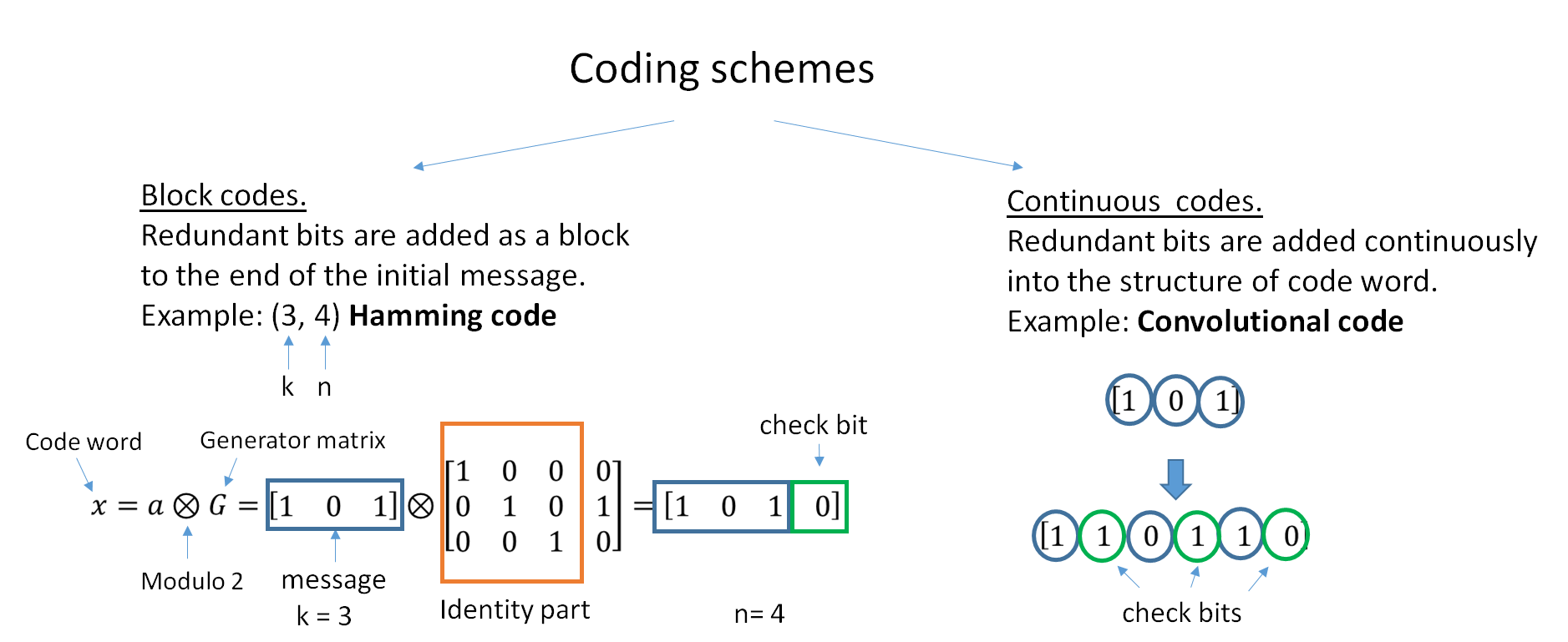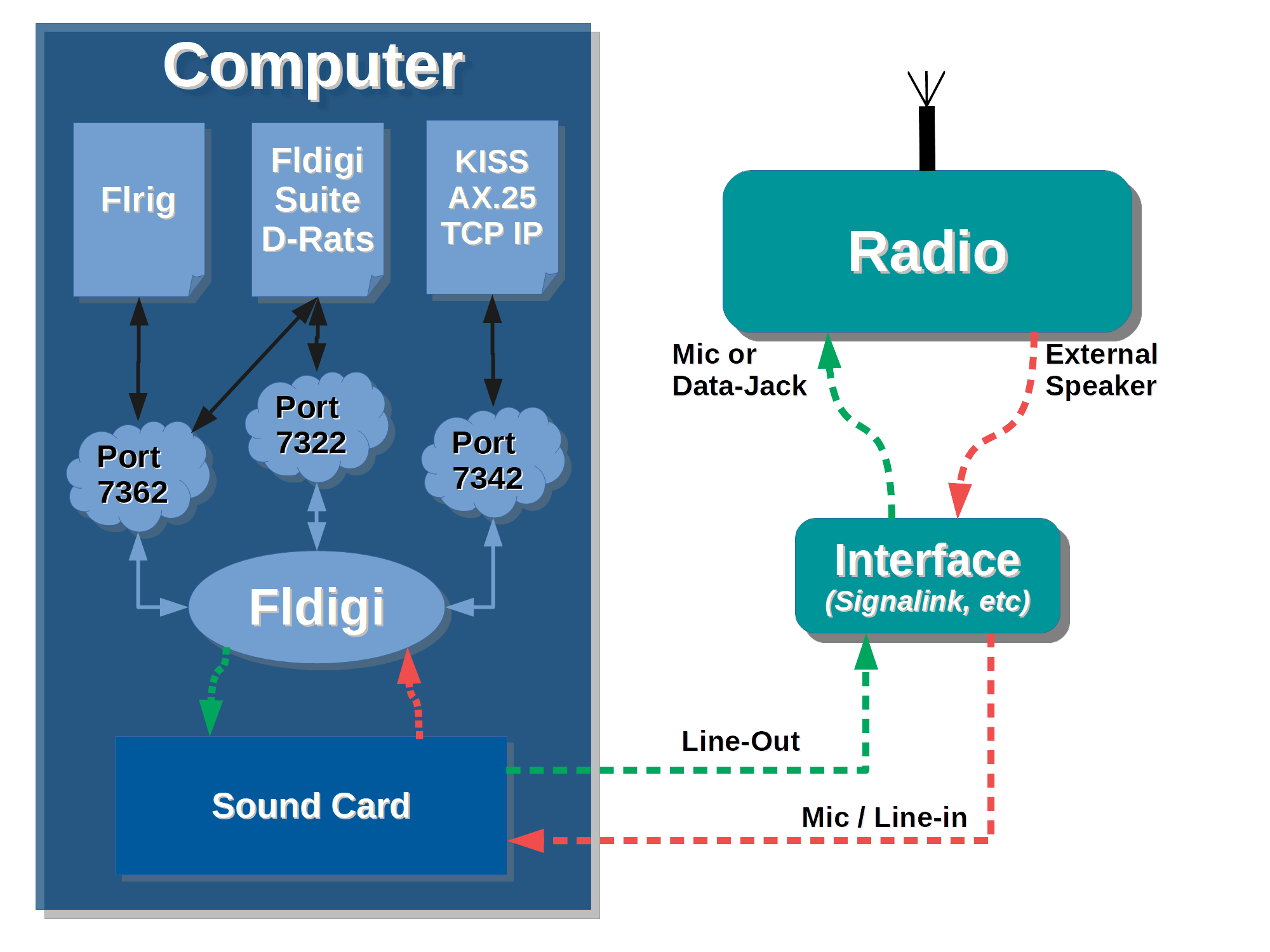|
Mt63
MT63 is a digital :Radio modulation modes, radio modulation mode for transmission in high-noise situations developed by Pawel Jalocha call sign, SP9VRC. MT63 is designed for keyboard-to-keyboard conversation modes, on high frequency, HF amateur radio bands. Description MT63 distributes the encoding of each character over a long time period, and over several tones. This code and symbol spreading implementation is key to its robustness under less than ideal conditions. The MT63 mode is very tolerant of mistuning, as most software will handle 120 Hz tuning offsets under normal conditions. Latency One shortcoming of MT63 is that robustness is somewhat compromised with the short interleaver. Latency (delay between transmitted characters) is more than 6 seconds with the long interleaver. The typical character transmission delay is 12.8 seconds with long interleave mode. Media MT63 is seeing a resurgence in its popularity on shortwave with the VOA Radiogram but the softwar ... [...More Info...] [...Related Items...] OR: [Wikipedia] [Google] [Baidu] |
:Category:Radio Modulation Modes
{{Commons cat, Radio modulation modes Signals sent by radio (or over long wires or when stored on magnetic media) must be modulated with some method that prevents their signal from degrading before the signals can be received. A transmitter and receiver must use the same ''mode'' of modulation to successfully communicate. Some of these are digital Digital usually refers to something using discrete digits, often binary digits. Technology and computing Hardware *Digital electronics, electronic circuits which operate using digital signals **Digital camera, which captures and stores digital i ... modulations, which typically modulate data to intermediate frequencies, which are then modulated to radio frequencies using another modulation mode such as FM or AM. Modulation modes Data transmission Physical layer protocols Modems ... [...More Info...] [...Related Items...] OR: [Wikipedia] [Google] [Baidu] |
Call Sign
In broadcasting and radio communications, a call sign (also known as a call name or call letters—and historically as a call signal—or abbreviated as a call) is a unique identifier for a transmitter station. A call sign can be formally assigned by a government agency, informally adopted by individuals or organizations, or even cryptographically encoded to disguise a station's identity. The use of call signs as unique identifiers dates to the landline railroad telegraph system. Because there was only one telegraph line linking all railroad stations, there needed to be a way to address each one when sending a telegram. In order to save time, two-letter identifiers were adopted for this purpose. This pattern continued in radiotelegraph operation; radio companies initially assigned two-letter identifiers to coastal stations and stations onboard ships at sea. These were not globally unique, so a one-letter company identifier (for instance, 'M' and two letters as a Marconi station ... [...More Info...] [...Related Items...] OR: [Wikipedia] [Google] [Baidu] |
High Frequency
High frequency (HF) is the ITU designation for the range of radio frequency electromagnetic waves (radio waves) between 3 and 30 megahertz (MHz). It is also known as the decameter band or decameter wave as its wavelengths range from one to ten decameters (ten to one hundred meters). Frequencies immediately below HF are denoted medium frequency (MF), while the next band of higher frequencies is known as the very high frequency (VHF) band. The HF band is a major part of the shortwave band of frequencies, so communication at these frequencies is often called shortwave radio. Because radio waves in this band can be reflected back to Earth by the ionosphere layer in the atmosphere – a method known as "skip" or " skywave" propagation – these frequencies are suitable for long-distance communication across intercontinental distances and for mountainous terrains which prevent line-of-sight communications. The band is used by international shortwave broadcasting stations ... [...More Info...] [...Related Items...] OR: [Wikipedia] [Google] [Baidu] |
Amateur Radio
Amateur radio, also known as ham radio, is the use of the radio frequency spectrum for purposes of non-commercial exchange of messages, wireless experimentation, self-training, private recreation, radiosport, contesting, and emergency communications. The term "amateur" is used to specify "a duly authorised person interested in radioelectric practice with a purely personal aim and without pecuniary interest;" (either direct monetary or other similar reward) and to differentiate it from commercial broadcasting, public safety (such as police and fire), or professional two-way radio services (such as maritime, aviation, taxis, etc.). The amateur radio service (''amateur service'' and '' amateur-satellite service'') is established by the International Telecommunication Union (ITU) through the Radio Regulations. National governments regulate technical and operational characteristics of transmissions and issue individual station licenses with a unique identifying call sign, which mus ... [...More Info...] [...Related Items...] OR: [Wikipedia] [Google] [Baidu] |
Forward Error Correction
In computing, telecommunication, information theory, and coding theory, an error correction code, sometimes error correcting code, (ECC) is used for controlling errors in data over unreliable or noisy communication channels. The central idea is the sender encodes the message with redundant information in the form of an ECC. The redundancy allows the receiver to detect a limited number of errors that may occur anywhere in the message, and often to correct these errors without retransmission. The American mathematician Richard Hamming pioneered this field in the 1940s and invented the first error-correcting code in 1950: the Hamming (7,4) code. ECC contrasts with error detection in that errors that are encountered can be corrected, not simply detected. The advantage is that a system using ECC does not require a reverse channel to request retransmission of data when an error occurs. The downside is that there is a fixed overhead that is added to the message, thereby requiring a h ... [...More Info...] [...Related Items...] OR: [Wikipedia] [Google] [Baidu] |
Varicode
Varicode is a self-synchronizing code for use in PSK31. It supports all ASCII characters, but the characters used most frequently in English have shorter codes. The space between characters is indicated by a 00 sequence, an implementation of Fibonacci coding. Originally created for speeding up real-time keyboard-to-keyboard exchanges over low bandwidth links, Varicode is freely available. Limitations * Varicode provides somewhat weaker compression in languages other than English that use same characters as in English. Varicode table Control characters Printable characters Character lengths Beginning with the single-bit code "1", valid varicode values may be formed by prepending a "1" or "10" to a shorter code. Thus, the number of codes of length ''n'' is equal to the Fibonacci number In mathematics, the Fibonacci numbers, commonly denoted , form a sequence, the Fibonacci sequence, in which each number is the sum of the two preceding ones. The sequence commonly starts from ... [...More Info...] [...Related Items...] OR: [Wikipedia] [Google] [Baidu] |
Fldigi
Fldigi (short for Fast light digital) is a free and open-source program which allows an ordinary computer's sound card to be used as a simple two-way data modem. The software is mostly used by amateur radio operators who connect the microphone and headphone connections of an amateur radio SSB or FM transceiver to the computer's headphone and microphone connections, respectively. This interconnection creates a "sound card defined radio" whose available bandwidth is limited by the sound card's sample rate and the external radio's bandwidth. Such communications are normally done on the shortwave amateur radio bands in modes such as PSK31, MFSK, RTTY, Olivia, and CW (Morse code). Increasingly, the software is also being used for data on VHF and UHF frequencies using faster modes such as 8-PSK. Using this software, it is possible for amateur radio operators to communicate worldwide while using only a few watts of RF power. Fldigi software is also used for amateur radio emerg ... [...More Info...] [...Related Items...] OR: [Wikipedia] [Google] [Baidu] |
Walsh Code
The Hadamard code is an error-correcting code named after Jacques Hadamard that is used for error detection and correction when transmitting messages over very noisy or unreliable channels. In 1971, the code was used to transmit photos of Mars back to Earth from the NASA space probe Mariner 9. Because of its unique mathematical properties, the Hadamard code is not only used by engineers, but also intensely studied in coding theory, mathematics, and theoretical computer science. The Hadamard code is also known under the names Walsh code, Walsh family, and Walsh–Hadamard code in recognition of the American mathematician Joseph Leonard Walsh. The Hadamard code is an example of a linear code of length 2^m over a binary alphabet. Unfortunately, this term is somewhat ambiguous as some references assume a message length k = m while others assume a message length of k = m+1. In this article, the first case is called the Hadamard code while the second is called the augmented Hadamar ... [...More Info...] [...Related Items...] OR: [Wikipedia] [Google] [Baidu] |
Radioteletype
Radioteletype (RTTY) is a telecommunications system consisting originally of two or more electromechanical teleprinters in different locations connected by radio rather than a wired link. Radioteletype evolved from earlier landline teleprinter operations that began in the mid-1800s. The US Navy Department successfully tested printing telegraphy between an airplane and ground radio station in 1922. Later that year, the Radio Corporation of America successfully tested printing telegraphy via their Chatham, Massachusetts, radio station to the R.M.S. Majestic. Commercial RTTY systems were in active service between San Francisco and Honolulu as early as April 1932 and between San Francisco and New York City by 1934. The US military used radioteletype in the 1930s and expanded this usage during World War II. From the 1980s, teleprinters were replaced by personal computers (PCs) running software to emulate teleprinters. The term radioteletype is used to describe both the original radi ... [...More Info...] [...Related Items...] OR: [Wikipedia] [Google] [Baidu] |
Shortwave Radio
Shortwave radio is radio transmission using shortwave (SW) radio frequencies. There is no official definition of the band, but the range always includes all of the high frequency band (HF), which extends from 3 to 30 MHz (100 to 10 metres); above the medium frequency band (MF), to the bottom of the VHF band. Radio waves in the shortwave band can be reflected or refracted from a layer of electrically charged atoms in the atmosphere called the ionosphere. Therefore, short waves directed at an angle into the sky can be reflected back to Earth at great distances, beyond the horizon. This is called skywave or "skip" propagation. Thus shortwave radio can be used for communication over very long distances, in contrast to radio waves of higher frequency, which travel in straight lines ( line-of-sight propagation) and are limited by the visual horizon, about 64 km (40 miles). Shortwave broadcasts of radio programs played an important role in the early days of radi ... [...More Info...] [...Related Items...] OR: [Wikipedia] [Google] [Baidu] |
PSK63
PSK63 (meaning Phase Shift Keying at a rate of 63 baud) is a Digital data, digital :Radio modulation modes, radio modulation mode used primarily in the amateur radio field to conduct real-time keyboard-to-keyboard informal text Synchronous conferencing, chat between amateur radio operators. History In April 2003, Skip Teller, KH6TY, the creator of Digipan, requested an addition to Moe (AE4JY) Wheatley's PSKCore DLL to support the PSK63 mode. Subsequently, another mode - PSK125 - has been added to the PSKCore DLL. * Unlike PSK63F, PSK63 does not use forward error correction (FEC). * PSK 63 is twice as fast as PSK63F's but exactly the same speed as PSK125F. Mode Support PSK63 is now supported directly in KH6TY's own QuikPSK software, as well as in Digipan, AA6YQ's WinWarbler, F6CTE's MultiPSK, AE4JY's WinPSK, HB9DRV's DM780, PSK31 Deluxe, MMVARI, Fldigi, MIXW, and DL4RCK's RCKRtty. It is also supported in hardware by the Elecraft KX3. Others are likely to follow, now that ver ... [...More Info...] [...Related Items...] OR: [Wikipedia] [Google] [Baidu] |







